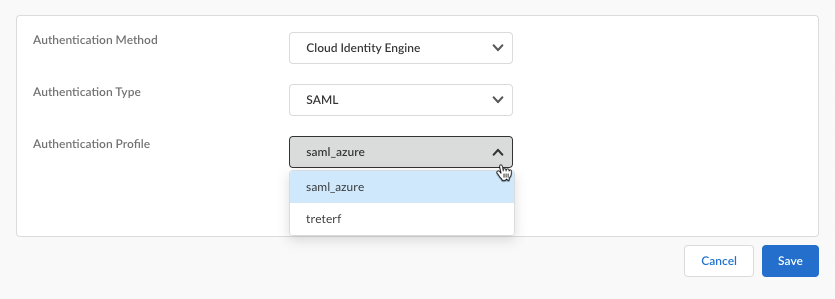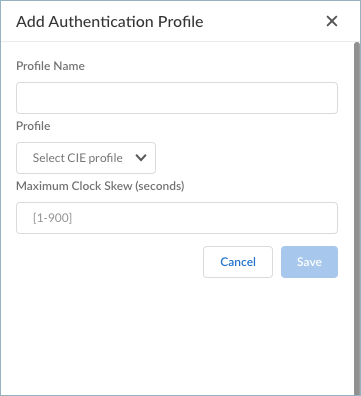Prisma Access Agent
Set Up Prisma Access Agent User Authentication (NGFW Deployment)
Table of Contents
Expand All
|
Collapse All
Prisma Access Agent Docs
-
-
- Configure the Prisma Access Agent (Coexistence Tenant)
- Set Up the Infrastructure for Prisma Access Agents
- Configure General Global Settings for the Prisma Access Agent
- Configure a Certificate to Decrypt the Authentication Override Cookie (Panorama Managed NGFW)
- Export the Authentication Override Cookie for Connecting to an On-Premises NGFW Gateway (Coexistence Tenant)
- Push the Prisma Access Agent Configuration
-
- Prisma Access Agent Overview
-
- Install the Prisma Access Agent
- Log in to the Prisma Access Agent
- Change Prisma Access Agent App Settings
- Connect the Prisma Access Agent to a Different Location
- Connect the Prisma Access Agent to a Different Server
- View Prisma Access Agent Notifications
- Disconnect the Prisma Access Agent from a Location
- Disable the Prisma Access Agent
- Log out of the Prisma Access Agent
- Get Help for Prisma Access Agent Issues
- Switch Between the Prisma Access Agent and GlobalProtect App
- Prisma Access Agent Commands
Set Up Prisma Access Agent User Authentication (NGFW Deployment)
Learn how to set up the user authentication for Prisma Access Agent users in
NGFW deployments.
For Panorama managed NGFW deployments, you can set up user authentication so that
only legitimate Prisma Access Agent users have access to your services and
applications.
Before you begin:
On Prisma Access Agent and GlobalProtect™ coexistence tenants, the Prisma Access Agent supports only SAML authentication with Cloud Identity Engine, while GlobalProtect supports authentication types such as
SAML, RADIUS, LDAP, TACACS+, and Kerberos.
- Log in to Strata Cloud Manager as the administrator.
- Select WorkflowsPrisma Access AgentSetup.

- Select Prisma Access Agent.
- Click Add User Authentication.

- Select an Authentication Profile. The authentication profile is the same one that you set up in Cloud Identity Engine.
- To select an existing profile, select an Authentication Profile from the list.

- If no authentication profile exists or you want to add a new one, click Create New.
- Enter the Profile Name.
- Select a CIE profile from the drop-down.
- Enter the Maximum Clock Skew (seconds),
which is the allowed system time difference (in seconds) between
the IdP and gateway when the gateway validates IdP messages. If
the difference exceeds this value, authentication fails. The range is 1-900 seconds. There is no default value.
- Save the authentication profile
settings.

- Select the authentication profile that you just added.
- Save your user authentication settings.




